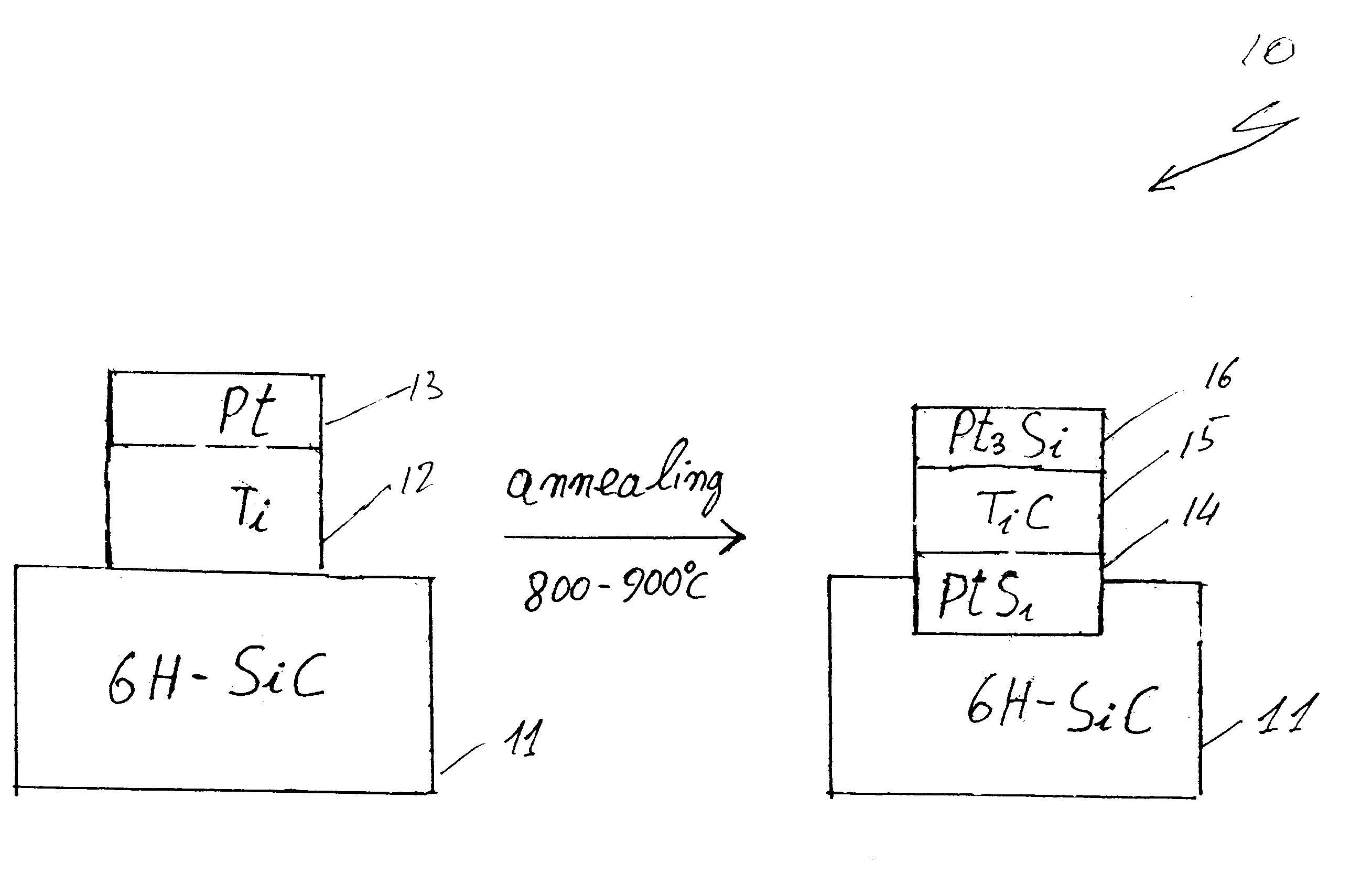Technology for thermodynamically stable contacts for binary wide band gap semiconductors
a technology of wide band gap semiconductors and contacts, applied in semiconductor/solid-state device manufacturing, basic electric elements, electric apparatus, etc., can solve the problems of limited ability to use stable contact design, limited applicability of phase diagrams, and added complexity of ternary reactions
- Summary
- Abstract
- Description
- Claims
- Application Information
AI Technical Summary
Benefits of technology
Problems solved by technology
Method used
Image
Examples
Embodiment Construction
Preparation of Ti.backslash.Pt contact for 6H-SiC.
Two metallic layers were deposited sequentially without breaking the vacuum, using e-beam thermal deposition under vacuum of 1.multidot.10.sup.-8 Torr onto two 6H-SiC substrate samples. The substrates (11 in FIG. 1) were neither cooled nor heated externally.
As shown schematically in FIG. 1, the first layer 12 consisted of Ti and was 16-nm-thick. The second layer 13 consisted of Pt and was 8-nm-thick. One sample was kept as a reference while the other was heat-treated in an evacuated tube furnace under vacuum of 1.multidot.10.sup.-7 Torr for an hour at 800.degree. C. and for another hour at 900.degree. C.
Then the samples were depth-profiled using x-ray photoelectron spectroscopy (XPS) in conjunction with ion sputtering. The craters, formed by the sputtering, were analyzed using crater edge scanning Auger microscopy. The XPS results were used for chemical identification of the phases, while the crater edge profiling was used to obtain ...
PUM
| Property | Measurement | Unit |
|---|---|---|
| pressure | aaaaa | aaaaa |
| temperature | aaaaa | aaaaa |
| temperatures | aaaaa | aaaaa |
Abstract
Description
Claims
Application Information
 Login to View More
Login to View More - R&D
- Intellectual Property
- Life Sciences
- Materials
- Tech Scout
- Unparalleled Data Quality
- Higher Quality Content
- 60% Fewer Hallucinations
Browse by: Latest US Patents, China's latest patents, Technical Efficacy Thesaurus, Application Domain, Technology Topic, Popular Technical Reports.
© 2025 PatSnap. All rights reserved.Legal|Privacy policy|Modern Slavery Act Transparency Statement|Sitemap|About US| Contact US: help@patsnap.com


